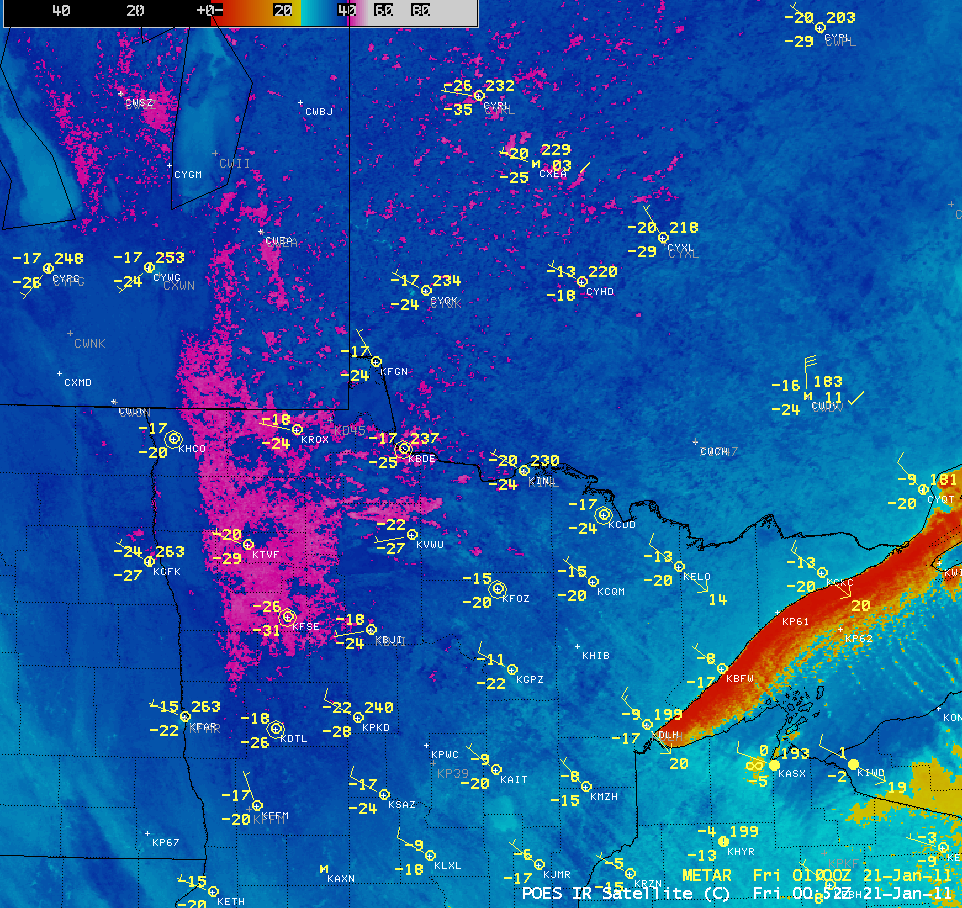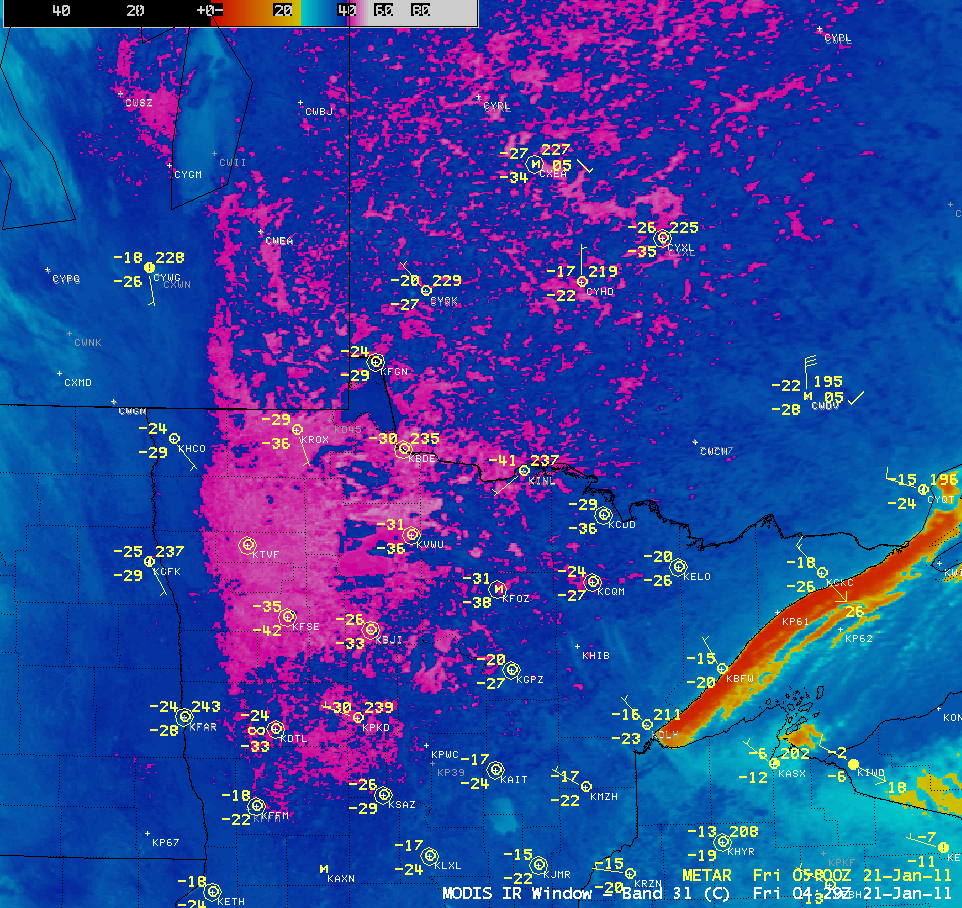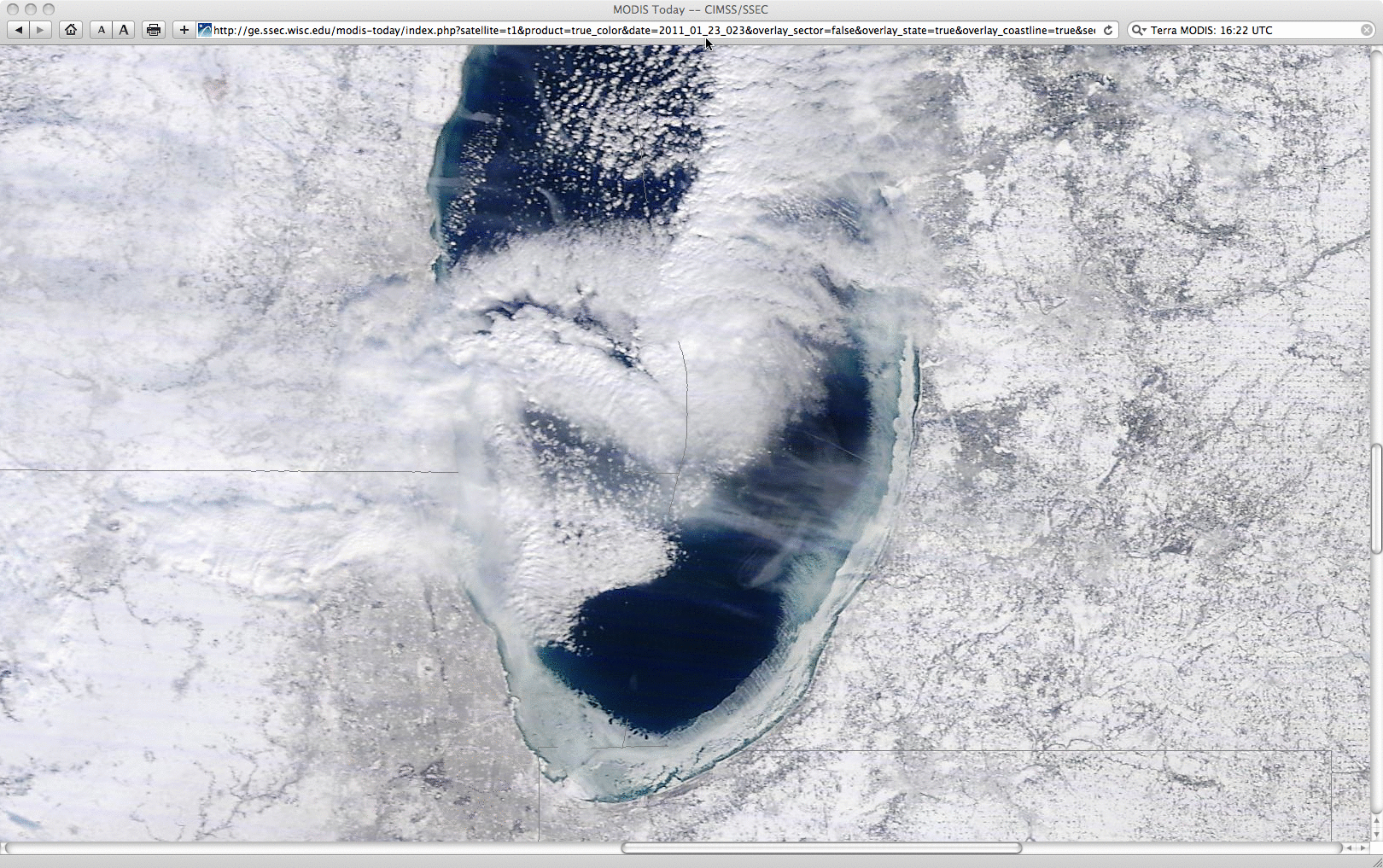The first -40ºF temperatures of the winter season in the Lower 48 states
A major surge of arctic air from Canada helped to produce the first surface air temperatures of -40º F (-40º C) or colder over the Lower 48 states during the Winter of 2010/2011 — the coldest official minimum temperature was -46º F (-43º C) at International Falls, Minnesota on the morning of 21 January 2011, with a number of locations across northern Minnesota and northern Wisconsin in the -30º F (-34º C) to -40º F (-40º C) range.
A series of AWIPS images of 1-km resolution POES AVHRR 10.8 µm IR and MODIS 11.0 µm IR data (above) shows the increase in areal coverage of surface IR brightness temperatures of -40º C and colder (purple to white color enhancement). The coldest surface IR brightness temperature on the images was -49º C (-56º F) at 08:41 UTC — but surface IR brightness temperatures do not always correlate well with surface air temperatures (which are generally measured in a shelter at a height of about 5 feet above the surface). Note the significantly warmer waters along the north shore of Lake Superior (yellow to red color enhancement) — MODIS Sea Surface Temperature values there were still in the low to middle 30s F.
On the 04:29 UTC MODIS image, some features of curiosity are the 3 northwest-to-southeast oriented “streaks” that resemble plumes near Hibbing (station identifier KHIB). These could be plumes from industrial sites (mining, or power plants) — in fact, we have seen similar plumes coming from that same area in the past on 1-km resolution MODIS fog/stratus product imagery. A comparison of MODIS 11.0 µm IR and MODIS Land Surface Temperature (LST) product images (below) shows that the “plumes” exhibited LST values near -20º F (darker blue color enhancement), compared to adjacent LST values in the -30s F (violet color enhancement).
=========================================
As a result of the influx of cold arctic air, a dramatic increase in ice formation was seen in the nearshore waters of Lake Michigan. Comparisons of 250-meter resolution MODIS Red/Green/Blue (RGB) true color (created using bands 04/03/01) and false color (created using bands 07/02/01) images from the SSEC MODIS Today site show filaments of ice extending offshore into Lake Michigan in the Green Bay, Wisconsin area (above), with more extensive ice formation farther to the south in the southwestern portion of Lake Michigan in the Milwaukee, Wisconsin and Chicago, Illinois area (below). Snow cover and ice appear as shades of cyan on the MODIS false color images, in contrast to supercooled water droplet clouds (which appear as much brighter features on the imagery).
=============== 23 JANUARY UPDATE ===============
With continued cold temperatures across the Great Lakes region, ice coverage increased along the nearshore waters of southern Lake Michigan. A comparison of 250-meter resolution MODIS true color RGB images on 23 January 2011 (below) revealed some northward movement of the ice during the time between the 16:22 UTC overpass of the Terra satellite and the 19:42 UTC overpass of the Aqua satellite (due to southerly winds pushing the ice away from the shore). Features appear somewhat “blurred” on the later Aqua MODIS image due to the fact the the scene was near the edge of the scan swath.






